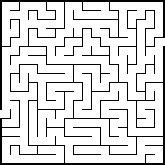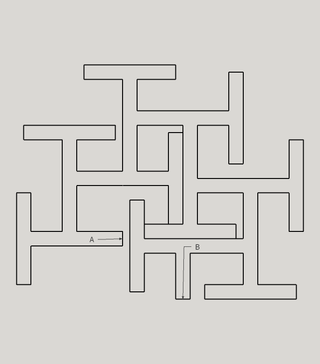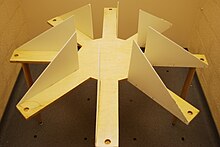
Animal cognition encompasses the mental capacities of non-human animals including insect cognition. The study of animal conditioning and learning used in this field was developed from comparative psychology. It has also been strongly influenced by research in ethology, behavioral ecology, and evolutionary psychology; the alternative name cognitive ethology is sometimes used. Many behaviors associated with the term animal intelligence are also subsumed within animal cognition.

The caudate nucleus is one of the structures that make up the corpus striatum, which is a component of the basal ganglia in the human brain. While the caudate nucleus has long been associated with motor processes due to its role in Parkinson's disease, it plays important roles in various other nonmotor functions as well, including procedural learning, associative learning and inhibitory control of action, among other functions. The caudate is also one of the brain structures which compose the reward system and functions as part of the cortico–basal ganglia–thalamic loop.

In cognitive psychology and neuroscience, spatial memory is a form of memory responsible for the recording and recovery of information needed to plan a course to a location and to recall the location of an object or the occurrence of an event. Spatial memory is necessary for orientation in space. Spatial memory can also be divided into egocentric and allocentric spatial memory. A person's spatial memory is required to navigate around a familiar city. A rat's spatial memory is needed to learn the location of food at the end of a maze. In both humans and animals, spatial memories are summarized as a cognitive map.

The Morris water navigation task, also known as the Morris water maze, is a behavioral procedure mostly used with rodents. It is widely used in behavioral neuroscience to study spatial learning and memory. It enables learning, memory, and spatial working to be studied with great accuracy, and can also be used to assess damage to particular cortical regions of the brain. It is used by neuroscientists to measure the effect of neurocognitive disorders on spatial learning and possible neural treatments, to test the effect of lesions to the brain in areas concerned with memory, and to study how age influences cognitive function and spatial learning. The task is also used as a tool to study drug-abuse, neural systems, neurotransmitters, and brain development.

A cognitive map is a type of mental representation which serves an individual to acquire, code, store, recall, and decode information about the relative locations and attributes of phenomena in their everyday or metaphorical spatial environment. The concept was introduced by Edward Tolman in 1948. He tried to explain the behavior of rats that appeared to learn the spatial layout of a maze, and subsequently the concept was applied to other animals, including humans. The term was later generalized by some researchers, especially in the field of operations research, to refer to a kind of semantic network representing an individual's personal knowledge or schemas.
A water maze is a device used to test an animal's memory in which the alleys are filled with water, providing a motivation to escape.

The Barnes maze is a tool used in psychological laboratory experiments to measure spatial learning and memory. The test was first developed by Dr. Carol Barnes in 1979. The test subjects are usually rodents such as mice or lab rats, which either serve as a control or may have some genetic variable or deficiency present in them which will cause them to react to the maze differently. The basic function of Barnes maze is to measure the ability of a mouse to learn and remember the location of a target zone using a configuration of distal visual cues located around the testing area. This noninvasive task is useful for evaluating novel chemical entities for their effects on cognition as well as identifying cognitive deficits in transgenic strains of rodents that model for disease such as Alzheimer's disease. It is also used by neuroscientists to determine whether there is a causative effect after mild traumatic brain injury on learning deficits and spatial memory retention (probe) at acute and chronic time points. This task is dependent on the intrinsic inclination of the subjects to escape from an aversive environment and on hippocampal-dependent spatial reference memory.

Latent learning is the subconscious retention of information without reinforcement or motivation. In latent learning, one changes behavior only when there is sufficient motivation later than when they subconsciously retained the information.

The elevated plus maze (EPM) is a test measuring anxiety in laboratory animals that usually uses rodents as a screening test for putative anxiolytic or anxiogenic compounds and as a general research tool in neurobiological anxiety research such as PTSD and TBI. The model is based on the test animal's aversion to open spaces and tendency to be thigmotaxic. In the EPM, this anxiety is expressed by the animal spending more time in the enclosed arms. The validity of the model has been criticized as non-classical clinical anxiolytics produce mixed results in the EPM test. Despite this, the model is still commonly used for screening putative anxiolytics and for general research into the brain mechanisms of anxiety.
The study of memory incorporates research methodologies from neuropsychology, human development and animal testing using a wide range of species. The complex phenomenon of memory is explored by combining evidence from many areas of research. New technologies, experimental methods and animal experimentation have led to an increased understanding of the workings of memory.

Wim E. Crusio is a Dutch behavioral neurogeneticist and a directeur de recherche with the French National Centre for Scientific Research in Talence, France.

The effects of stress on memory include interference with a person's capacity to encode memory and the ability to retrieve information. Stimuli, like stress, improved memory when it was related to learning the subject. During times of stress, the body reacts by secreting stress hormones into the bloodstream. Stress can cause acute and chronic changes in certain brain areas which can cause long-term damage. Over-secretion of stress hormones most frequently impairs long-term delayed recall memory, but can enhance short-term, immediate recall memory. This enhancement is particularly relative in emotional memory. In particular, the hippocampus, prefrontal cortex and the amygdala are affected. One class of stress hormone responsible for negatively affecting long-term, delayed recall memory is the glucocorticoids (GCs), the most notable of which is cortisol. Glucocorticoids facilitate and impair the actions of stress in the brain memory process. Cortisol is a known biomarker for stress. Under normal circumstances, the hippocampus regulates the production of cortisol through negative feedback because it has many receptors that are sensitive to these stress hormones. However, an excess of cortisol can impair the ability of the hippocampus to both encode and recall memories. These stress hormones are also hindering the hippocampus from receiving enough energy by diverting glucose levels to surrounding muscles.
Developed by Calvin S. Hall, the open field test is an experimental test used to assay general locomotor activity levels, anxiety, and willingness to explore in animals in scientific research. However, the extent to which behavior in the open field measures anxiety is controversial. The open field test can be used to assess memory by evaluating the ability of the animal to recognize a stimuli or object. Another animal test that is used to assess memory using that same concept is the novel object recognition test.
Spontaneous Alternation Behavior (SAB) describes the tendency to alternate in their pursuit of different stimuli in consecutive trials despite a lack of training or reinforcement. The behavior emerged from experiments using animals, mainly rodents, who naturally demonstrated the behavioral pattern when placed in previously unexplored maze shapes.

In behavioral science, a T-maze is a simple forked passage used in animal cognition experiments. It is shaped like the letter T, providing the subject, typically a rodent, with a straightforward choice. T-mazes are used to study how the rodents function with memory and spatial learning through applying various stimuli. Starting in the early 20th century, rodents were used in experiments such as the T-maze. These concepts of T-mazes are used to assess rodent behavior. The different tasks, such as left-right discrimination and forced alternation, are mainly used with rodents to test reference and working memory.
Time-place learning (TPL) is the process by which animals link events with both the location and time of occurrence. It enables them to decide which locations to visit or to avoid based on previous experience and knowledge of the current time of day. TPL presumably allows animals to maximize their chances of finding resources and avoiding predators, increasing survival chances. TPL requires spatial memory and a sense of time. The latter may be based on external time-cues (Zeitgebers), or internally generated circadian rhythms. TPL may fundamentally underlie episodic memory.

The Cincinnati Water Maze (CWM) is a type of water maze. Water mazes are experimental equipment used in laboratories; they are mazes that are partially filled with water, and rodents are put in them to be observed and timed as they make their way through the maze. Generally two sets of rodents are put through the maze, one that has been treated, and another that has not, and the results are compared. The experimenter uses this type of maze to learn about the subject's cognitive or emotional processes.

Michela Gallagher is an American cognitive psychologist and neuroscientist. She is the Krieger-Eisenhower Professor of Psychology and Neuroscience at Johns Hopkins University. Her scientific work has changed the model of neurocognitive aging, and developed new indices for its study. Previously, work had focused on neurodegeneration as a primary cause of memory loss.
The Hebb–Williams maze is a maze used in comparative psychology to assess the cognitive ability of small animals such as mice and rats. It was developed by Donald O. Hebb and his student Kenneth Williams in 1946, when both men were working at Queen's University at Kingston. A modified version, intended specifically to measure the intelligence of rats, was described in a 1951 paper by Hebb's students Rabinovitch and Rosvold. This modified version is the most commonly used in research where the aim is to measure animals' problem-solving abilities. In general, animals are tested in the Hebb–Williams maze's twelve separate mazes after acclimating to six practice mazes, though some studies have not used all twelve testing mazes. The two main procedures for the maze are the reward conditioning task and the water escape task. The maze has been used to investigate strain and sex differences in mice. A 2018 study argued that the maze is potentially useful for translational research in fragile X syndrome in humans.
Spatial anxiety is a sense of anxiety an individual experiences while processing environmental information contained in one's geographical space, with the purpose of navigation and orientation through that space. Spatial anxiety is also linked to the feeling of stress regarding the anticipation of a spatial-content related performance task. Particular cases of spatial anxiety can result in a more severe form of distress, as in agoraphobia.













